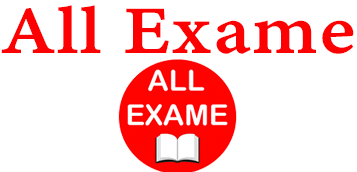Sweeper Cum porter Of Railways
The Railway Boards Boards are inviting online applications from qualified individuals to hire various positions in Level 1 of 7 CPC Pay Matrix vacancies for various units in Indian Railways. Complete applications by all means should be submitted ONLY ONLINE to any of the Railway Recruitment Boards.
Candidates should note that the date of birth completed on this application must be the same as that recorded on the Matriculation / SSLC or similar certificate. No subsequent application for its modification will be considered.
Candidates should note that the date of birth completed on this application must be the same as that recorded on the Matriculation / SSLC or similar certificate. No subsequent application for its modification will be considered.
The maximum allowable speed of the train must not be less than the maximum allowed
the speed of a dead train
iii) Arrangements have been made to ensure that the brakes can be applied to death
trains in conjunction with operating trains
i) Double / triple head running is permitted in the section where the dead are
The locomotive will be pulled.
ii) If a dead electric train is to be transported to a place without electricity, special
a check will be made regarding its violation of the high-traffic system
ratings. In the event of any violation of the law, a dead train will be treated as
in the ODC.
iii) As a final check, the joints must run approximately 500 meters and the driver must
check any abnormal height of the temperature of the dead train wheels once
he will also check it out at the next stop during the trip.
iv) In addition to freight / passenger trains, a dead train can be connected to it.
Mail / Express trains that include fast trains but do not include Rajdhani and Shatabdi if so
train brakes including proportionate brakes are effective and maximum
the permissible speed of the train is not less than the bookmark speed of the train at which you are traveling
it is attached. Locoos with idle brakes can be connected under the brakes
train capacity within the permissible limits. Defective train inside
underground appliances can only be connected to freight trains

Trains, usually from the train station to the final destination. This is a fast stream
of freight trains and does not require any stops on the route, except for the change of personnel.
Such trains will usually carry box trains, brake rails in the air in one place. These trains
are designed to run as non-stationary Rajdhani trains and may have fixed timetables and guaranteed commute
time. This group may include trains of private freight drivers.
More about trains – It can also block racks or it can have two or more locations in one or near the same place
part. These may have the usual bogie stock
Each freight train needs to be instructed to operate under a different number / name or Train
ID to monitor its movement in intermediate divisions, locations etc and this
manage all processes at control offices, premises, C&W depot and Crew / Guard depots
booking Lobby Power Controller / Traction Loco Controller.
b) A message from Divisional Control that the train is scheduled to depart from the station or
Yard at some point. known as the Train Notice. Message, continuously
passed on to all stakeholders. Availability of (i) Freight (ii) Train (iii)
Staff / Guards and (iv) The route should be checked to order freight trains.
c) The connection between the Traffic controller / and the power controller (shed, if new
power required); So are the staff of the Yard / Station, C&W and Crew / Guard reservation
required.
d) A general conference with grounds, terminals, and its associated Unit is hosted by the Director
and exchanging information about train forecasts on premises; termination of
loading / unloading etc. and exchange of linked Levels. This is a precaution
it should be enforced by FOIS so that staff time spent on the phone is reduced and longer
productive work is done with better planning.
e) Regular monitoring to speed up loading / unloading at large areas / cargo sheds as well
Administration and Station Staff were carried out to ensure the availability of cargo.

Loco Outage refers to the average number of places available for traffic use per day (24 hours). Since
Diesel and Electric Locos have a long extension and may cover multiple stages per day, position
drawings can be kept at all times (0 to 24 hours) loco is online.
Representation of different colors in the Chart Bar can represent the time spent by each loco to function as
good Management Information System e.g. (a) the time taken by a running train (b) the time taken by the Staff
Change (c) Fueling time (Diesel Locos) (d) Loco test time taken (e) online adjustment time
(f) Light Engine operation time (g) time taken by Shunting (h) time spent in terminal / destination (i) enroute closure.
Electric and Diesel Locos are maintained by Loco Sheds and Locos when available
Schedules are available for use for a few days until a schedule / check is set
for sheds or locos need outside course repair. Therefore, while the working staff has four
control the performance of Locos usage and the flexibility of using Locos as per function
requirement, they must regularly review the Locos maintenance / inspection schedule and submit
Locos to the Shed well in time. Late departure of locos should be avoided by carefully planning the train
egijima. Similarly, every effort should be made to relocate dead areas or areas that need attention in the area.
home shed. The ability to draw Locos and special limits as agreed by joint officials
activities and loco departments should be followed.
While the operational department should improve the work done by each Loco i.e. top delivery
traffic to a small number Locos by adopting operational strategies and improvements
efficiently, the Shed and the Loco organization should provide the total number of Locos with good characters,
keeping an eye on traffic needs as Locos shortages can lead to transportation problems and inefficiencies
submit existing and possible traffic.
As well as availability, reliability, security and prediction should be targeted. Loco failure,
Loco problems on the route and non-functional areas should be kept to a minimum.
Locos estimation also needs to be done i.e. Loaded locos can be exported
Separation where needed.
Decreased train conferencing and an increase in the average speed of freight trains could be significant
improve engine usage.

Lobby is like a Wildlife Management Office. It was developed for the purpose of duplicating the engine
detention and detention of employees in the Yard or staff change station or engine for actual ordering of trains
and booking Staff / Guards.
It is advisable to have a combined reservation for Staff and Guards for both
at the same time. The management / staff of the reception area can predict the train from the Deputy
Manager / Category Manager and details about Names of Staff, Monitors and Login
time, location details, final C&W test etc.
They can confirm Loco schedule dates on their available chart and keep in touch
via Power Controller / TLC. They also “anticipate” the construction of the train, inspection,
readiness etc. and by constantly chasing, editing and updating information, trains are instructed
realistic expectations, Trains may be returned or canceled, if required
changed quickly.
Some Employees / Distributors may be kept in the Waiting Room for last minute care
absenteeism. Shunters can also be stored in the reception area of yards / large areas to attach, extract, and run
roundabouts or pull The train from the Yard up to the Crew changing area, to avoid major damage.
Loco line drivers.
Pre-Employee Detention, Employee Hours, Relocation Locos and Yard
imprisonment in Locos can be carefully monitored The Lobby and remedial measures taken.
The Rail Board provides Co-operative Integration and guidance for freight forwarding activities. It also contains
an important role of directing and communication, which is very important in a large network like the Indians
Rail. The Railway Board Regulatory Office also liaises with the Regional Head (Central
Zonal Head Quarters controls and loads of clocks and the movement of important traffic streams,
such as coal, uncooked plant material (iron ore), cement, cereals, compost, POL, sugar, export ores,
container traffic etc. It also looks at loading, exchange, power station, freight train working on the essentials
categories etc. to ensure that each Railway fulfills its responsibilities and promotes the use of a variety of goods. I
the items considered are the same or similar to those considered by the Regional Head in respect of
Diversity, but the perspective is broad. The Railway Board plays an important role in coordinating between
various railways and other departments of the Central Government and its associated economic sectors
Rail. Policy Development and Planning, which has a significant impact on Transportation Services as well
great rail board work.




